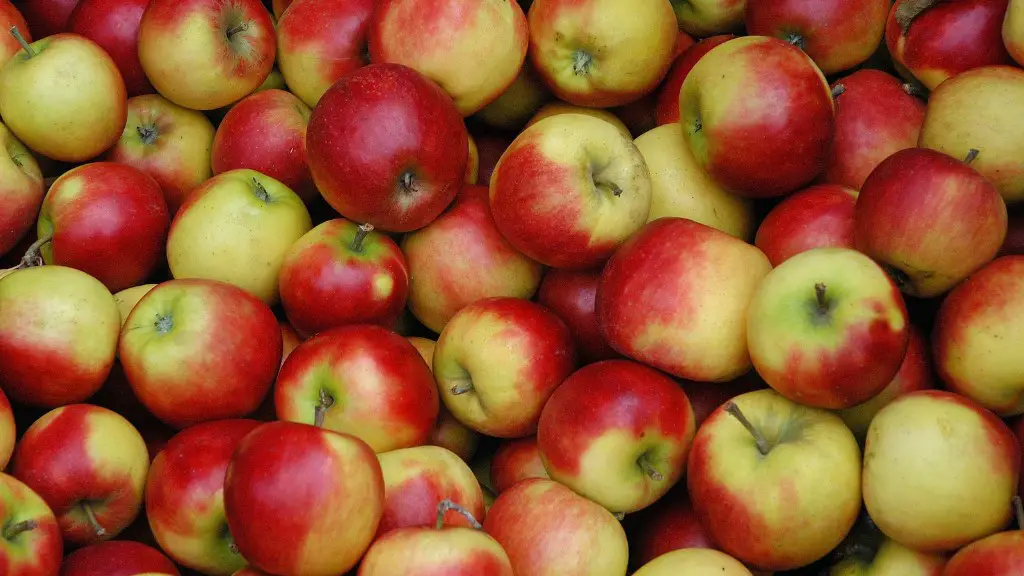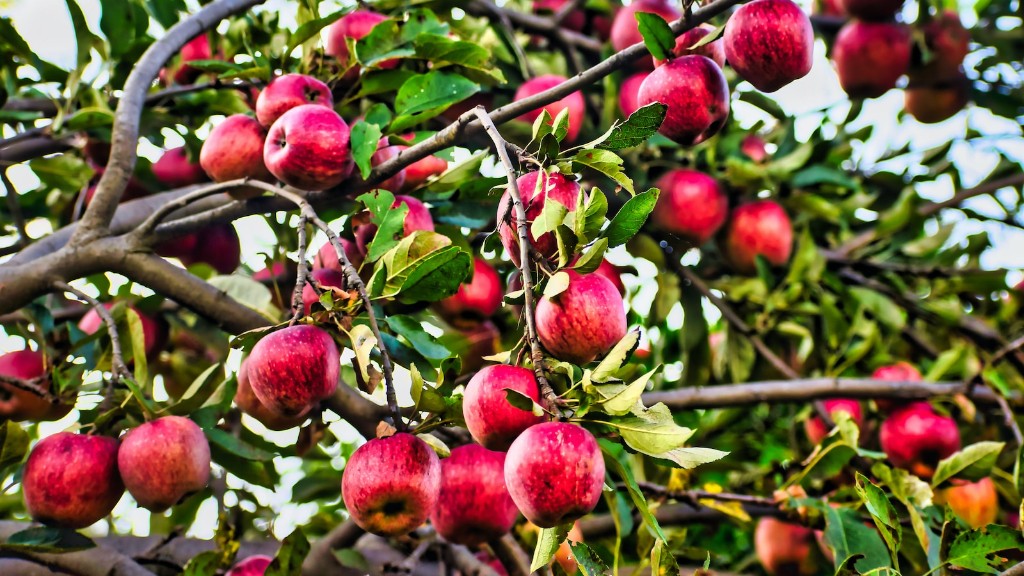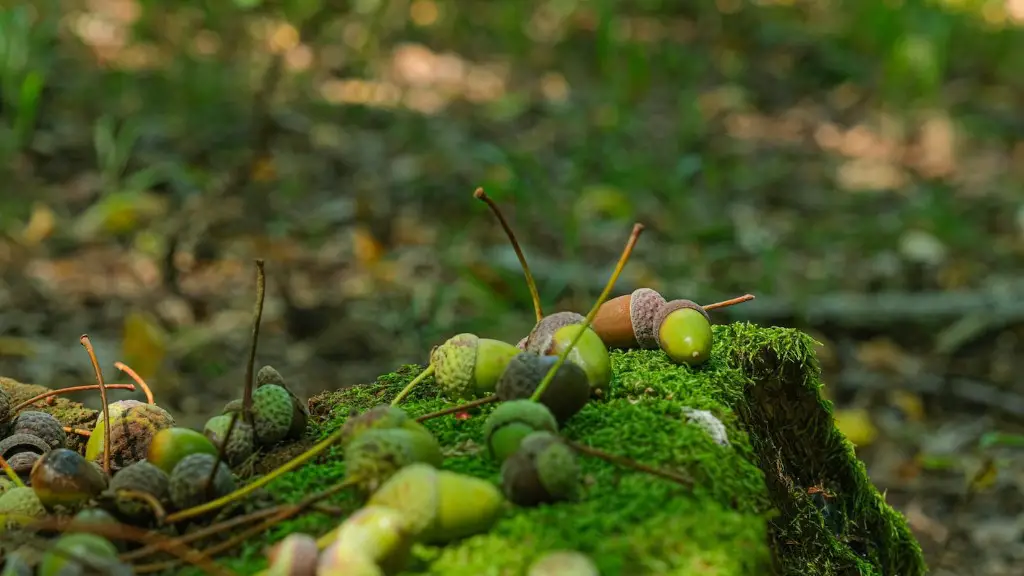Have you ever wondered how to dwarf an apple tree? It is possible to control the size and shape of the fruit tree and prune it to reach its desired size. To properly dwarf an apple tree, there are several steps you need to take. Here is the most effective way to dwarf an apple tree:
Start by pruning off some of the branches to reduce the size of the tree. This can be done in early spring. Cut the branches back to about one-third of their length. You can use loppers or a small saw for this. Also, cut off any branches that are growing at ground level as these can prevent the tree from developing a strong structure and inhibit sun exposure.
Apply some fertilizer to the soil surrounding the tree. This will provide extra nutrients for the tree and help it grow better. Spread the fertilizer evenly around the tree and cover it with about 1-2 cm layer of soil. Make sure to water the soil afterward to help the fertilizer absorb into the ground.
Prune the tree again in late summer. Cut off any branches that are growing too thick or are not needed. Also, remove any dead or decaying branches and shape the canopy of the tree to provide better sun exposure.
Mulch the soil around the apple tree. Doing this can help the tree retain moisture and keep weeds away. Use a layer of organic mulch, such as wood chips, bark, or compost, and spread it around the tree.
Water the tree regularly. To keep the apple tree healthy, make sure to water it at least once a week. Provide enough water to reach the roots of the tree but don’t overwater it as this can cause the roots to rot.
Check for pests or diseases. Monitor the tree for any signs of pests or diseases. If any are found, take immediate action to eradicate them. This can help the tree stay healthy and produce better-quality fruit.
How to Prune an Apple Tree
Pruning is a key part of dwarfing an apple tree and should be done correctly to get the desired result. Pruning involves removing parts of the tree that aren’t required or beneficial. To prune an apple tree, there are two key principles you need to follow:
Firstly, remove any dead or damaged branches. These can greatly reduce the quality of the fruit and prevent the tree from developing properly. Also, trim off any branches that rub against each other or grow in a downward direction. This will help balance the tree and encourage better air circulation.
Secondly, cut the branches to be removed back to the point where they intersect another branch or the trunk. This will ensure the cuts are clean and won’t cause any damage to the tree. Make sure to use sharp tools, such as pruning shears or loppers, to make the cuts.
How to Provide Additional Nutrients to the Apple Tree
For the apple tree to grow into its desired size and shape, it needs an adequate amount of nutrients. Providing these can be done in a few different ways. Firstly, you can use a soil fertilizer designed for apple trees. Spread the fertilizer around the tree and make sure to cover the soil with a thin layer of mulch afterward. This will help the tree retain moisture and provide additional nutrients.
Secondly, you can apply compost or other organic matter to the soil. Doing this can help replenish the soil with essential nutrients. Make sure to spread the compost or other organic material evenly around the tree to ensure the roots evenly absorb the nutrients.
How to Protect an Apple Tree from Pests and Diseases
To ensure the apple tree produces good-quality fruit, it is important to protect it from pests and diseases. The most effective way to do this is to regularly inspect the tree for any signs of damage. This includes discolored leaves, abnormal growths, and wilting. If any of these signs are found, take immediate action to address the issue. This can include spraying the tree with a pesticide or fungicide or removing any infested branches.
The best way to protect an apple tree from pests and diseases is to plant it in an area with good air circulation and proper drainage. This can help reduce the chances of the tree becoming infected by pests and diseases. Also, keep an eye on the weather – if it becomes too wet or too dry, this can weaken the tree and make it more susceptible to attack.
How to Water an Apple Tree Properly
For the apple tree to reach its desired size, it needs regular watering. The tree should be watered at least once a week to provide the roots with adequate moisture. When watering, make sure to provide enough water to reach the roots of the tree but don’t overwater it as this can cause root rot. Invest in a good-quality watering container or hose to make the task easier.
Also, consider using a drip-irrigation system to provide water to the apple tree. This is an efficient way to provide water without wasting any. It also allows you to easily control the amount of water being supplied to the tree. Before using such a system, make sure to check the soil type and moisture levels to ensure the tree is receiving the right amount.
How to Maintain an Apple Tree
Once the apple tree has reached its desired size, it needs to be maintained to keep it at a manageable level. Regular pruning and trimming is key for maintaining an apple tree. Prune off any unwanted branches, remove any dead or damaged ones, and shape the canopy of the tree to provide better sun exposure. Also, make sure to thoroughly inspect the tree for pests or diseases and take immediate action to eradicate them.
It is also important to mulch the soil around the tree to help it retain moisture. Apply a layer of organic mulch, such as wood chips, bark, or compost, and spread it around the tree. Doing this can help keep weeds away and provide the tree with additional nutrients. Finally, make sure to water the tree regularly to keep it healthy and allow it to produce better-quality fruit.



